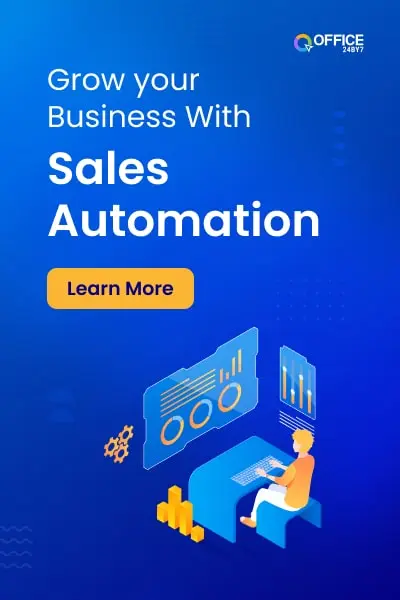Wouldn’t it be great if your email marketing could automatically connect your new leads to your current sales funnel? Your communications to potential leads always seemed to be topical, your sales pipeline would have fewer poor leads or leakage, and your conversion rate would always be rising.
Doesn’t this sound like something that happens in an alternative world?
However, this is not the case. This notion may also become a reality in your environment with the aid of drip marketing. Email drip campaigns are a series of marketing emails that are sent out continuously when a lead or customer completes a certain activity on your website or blog.
When a contact triggers an email drip campaign, a series of marketing emails is sent out automatically.
To mention a few examples, a trigger may be reaching a tenure barrier, such as being a long-term client, opening a link, or joining a certain list. Because they run on autopilot once set up, these automatic emails allow you to interact with contacts in a timely and appropriate manner.
Drip marketing beat general mailings because they are focused, timely, and relevant. Drip emails have an open rate of around 80% higher than single mailings (also known as email blasts), and average click-through rates are three times higher.
What is an Email Drip Campaign, and How does it Work?
Drip campaigns, to put it another way, are series of automatic emails that are sent out depending on certain schedules or user actions. They allow you to communicate with groups of individuals depending on events such as when a person joins up for an offer or how frequently they visit your website. A drip email is generated from a queue of previously written emails, so there’s no need to create and send each one individually. They may also be customized with your contacts’ names, corporate information, and other information.
Boost Customer Engagement and Loyalty
Drip email marketing software allows you to better and more efficiently contact prospects and consumers. Emails that are sent in reaction to user activities are more likely to receive a response since they are more interesting.
Let’s assume someone buys a product; you can use a drip-email campaign to send a series of emails showing them how to get the most out of their transaction. Set up a series of emails to get new customers up to speed on what they need to know if you have material that might be useful to them. A welcome email series is a wonderful approach to get your drip email campaigns off to a strong start.
Promote Material that is Relevant
When you know where your lead is in your sales cycle, it’s much easier to give them information that’s targeted to their specific requirements. When a new contact joins up using an opt-in form on your website, the same rules apply. Your emails will already have content that is extremely relevant to your email recipients if you use a drip-email campaign.
Whenever you’re running a small business, drip campaigns come in useful because you can’t devote as much time and effort to each client and prospect. Drip marketing may be used to target user groups depending on the features of your service they use most often or what kind of material they’re most interested in.
The Movement of the Funnel is Automated
They are not only successful (as seen by the figures above), but they also drive leads towards conversion without the need for personal involvement.
The only thing to keep in mind is that, like any technology, drip marketing processes are only as good as the thinking that goes into them. So, take a seat and sketch out the entire trip you want your prospect to take.
Re-engage Contacts who haven’t been in Touch in a While
Drip campaigns that are automated provide you with a lot of options for reaching out to your leads at any moment. Some connections may become inactive over time and never respond to your emails. You could want to design a campaign just for re-engaging these people.
You might utilize your drip campaign to promote additional marketing channels like social media accounts and YouTube in addition to a “Hey, we love you!” re-engagement approach.
Users may choose to interact with you through such methods. This is beneficial since it provides you with another method to stay top-of-mind, and the interaction may put your company in front of potential customers.
Capture Abandoned Shopping Carts
A lot of this applies to consumers and/or leads who abandon their shopping carts and never make a transaction. You’ve done everything you can to bring them to the checkout page, but even with a discount, you might not be able to persuade them to buy.
Remember to make sure your email connects with your brand, attracts your reader’s attention, and piques their interest enough for them to return to your website when establishing a drip campaign for people who’ve abandoned their carts.
Also Read: BRING EMAIL MARKETING IN YOUR BUSINESS AND SEE THE MAGIC
Time and Effort were Saved
Manual involvement is eliminated as a consequence of the automatic funnel movement, giving your team more time to focus on other tasks, such as envisioning other funnels to complete more transactions, planning other marketing initiatives, and actually speaking with prospects.
Remember to put in the first work to correctly set up drip marketing programs.
Include a CTA Button or a Question at the Conclusion
You’ll need a CTA at the conclusion of every drip marketing email if you want the lead to arrange a call, tell you who to contact, or sign up for a free trial. At the conclusion of each communication, leads should know what they should do.
The CTA should be adjusted to the buyer’s experience stage. You may ask them to follow your firm on social media if they’ve only lately joined up. You may give them a white paper or a case study once they’ve reached the contemplation stage.
If Your Drip Campaign isn’t Working, Get Some Feedback
Send a survey link to a lead if they don’t convert – that is, if they don’t arrange a demo, phone the sales team, or register for a webinar. It’s one thing to look at the numbers. Another is getting direct feedback from your leads on how you can improve.
Make a survey to figure out why the lead wasn’t interested. Was it just a case of not being in the right place at the right time? Is it possible that they went with a competitor? You can improve your drip campaign by using these responses to engage opportunities at every step of the buyer’s journey.


